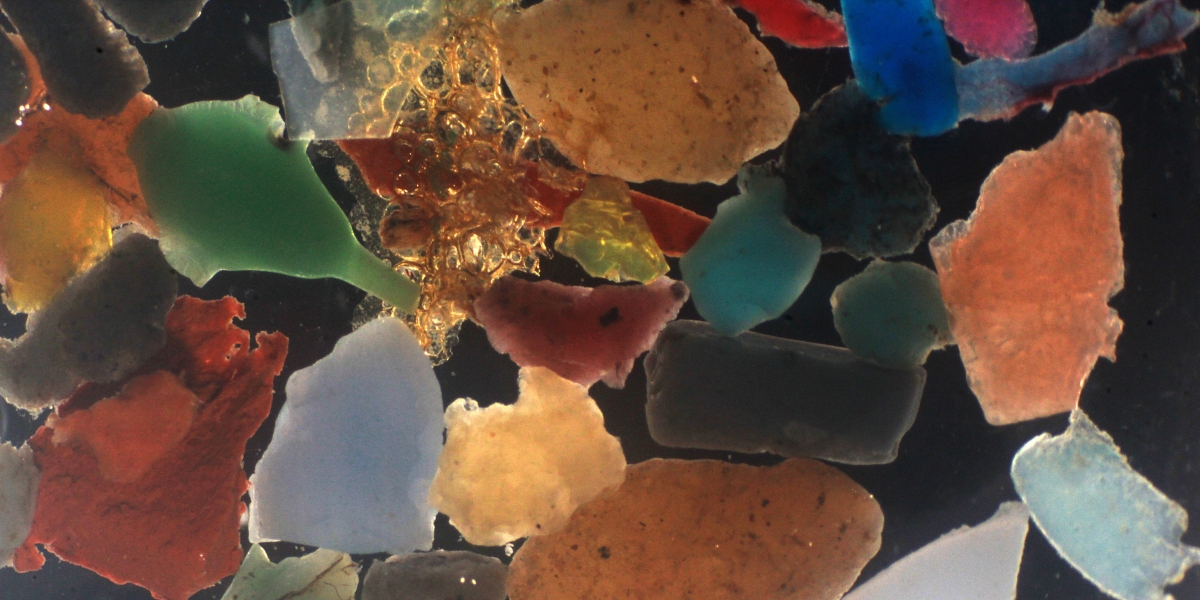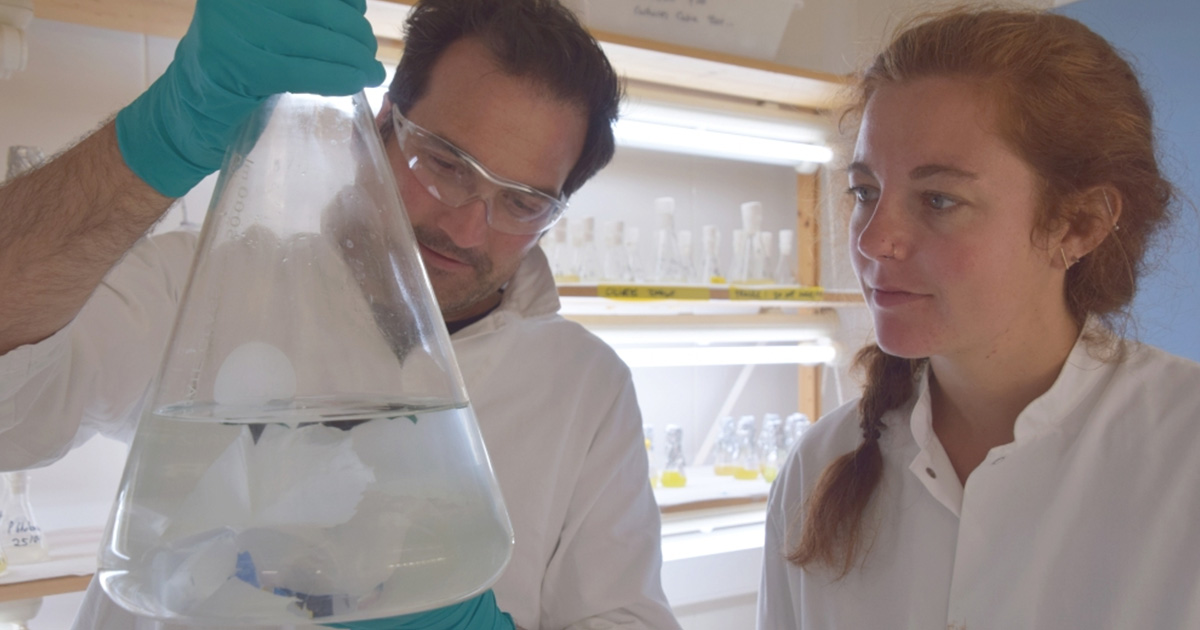The bacterium Rhodococcus ruber eats and actually digests plastic. This has been shown in laboratory experiments by Ph.D. student Maaike Goudriaan at Royal Netherlands Institute for Sea Research (NIOZ).
Based on a model study with plastic in artificial seawater in the lab, Goudriaan calculated that bacteria can break down about one percent of the fed plastic per year into CO2 and other harmless substances. "But," Goudriaan emphasizes, "this is certainly not a solution to the problem of the plastic soup in our oceans. It is, however, another part of the answer to the question of where all the 'missing plastic' in the oceans has gone."
Goudriaan had a special plastic manufactured specially for these experiments with a distinct form of carbon (carbon-13) in it. When she fed that plastic to bacteria after pretreatment with "sunlight"—a UV lamp—in a bottle of simulated seawater, she saw that a special version of carbon appeared as CO2 above the water. "The treatment with UV light was necessary because we already know that sunlight partially breaks down plastic into bite-sized chunks for bacteria," the researcher explains.
 Plastic particles about 2 mm large. (Photo credit: NIOZ)
Plastic particles about 2 mm large. (Photo credit: NIOZ)
Proof of Principle
"This is the first time we have proven in this way that bacteria actually digest plastic into CO2 and other molecules," Goudriaan states. It was already known that the bacterium Rhodococcus ruber can form a so-called biofilm on plastic in nature. It had also been measured that plastic disappears under that biofilm. "But now we have really demonstrated that the bacteria actually digest the plastic."
Underestimate
When Goudriaan calculates the total breakdown of plastic into CO2, she estimates that the bacteria can break down about one percent of the available plastic per year. "That's probably an underestimate," she adds. "We only measured the amount of carbon-13 in CO2, so not in the other breakdown products of the plastic. There will certainly be carbon-13 in several other molecules, but it's hard to say what part of that was broken down by the UV light and what part was digested by the bacteria."
No Solution
Even though marine microbiologist Goudriaan is very excited about the plastic-eating bacteria, she stresses that microbial digestion is not a solution to the huge problem of all the plastic floating on and in our oceans. "These experiments are mainly a proof of principle. I see it as one piece of the jigsaw in the issue of where all the plastic that disappears into the oceans stays. If you try to trace all our waste, a lot of plastic is lost. Digestion by bacteria could possibly provide part of the explanation."
From Lab to Mudflats
To discover whether ‘wild’ bacteria also eat plastic ‘in the wild’, follow-up research needs to be done. Goudriaan already did some pilot experiments with real sea water and some sediment that she had collected from the Wadden Sea floor. "The first results of these experiments hint at plastic being degraded, even in nature," she says. "A new Ph.D. student will have to continue that work. Ultimately, of course, you hope to calculate how much plastic in the oceans really is degraded by bacteria. But much better than cleaning up is prevention. And only we humans can do that," Goudriaan says.



